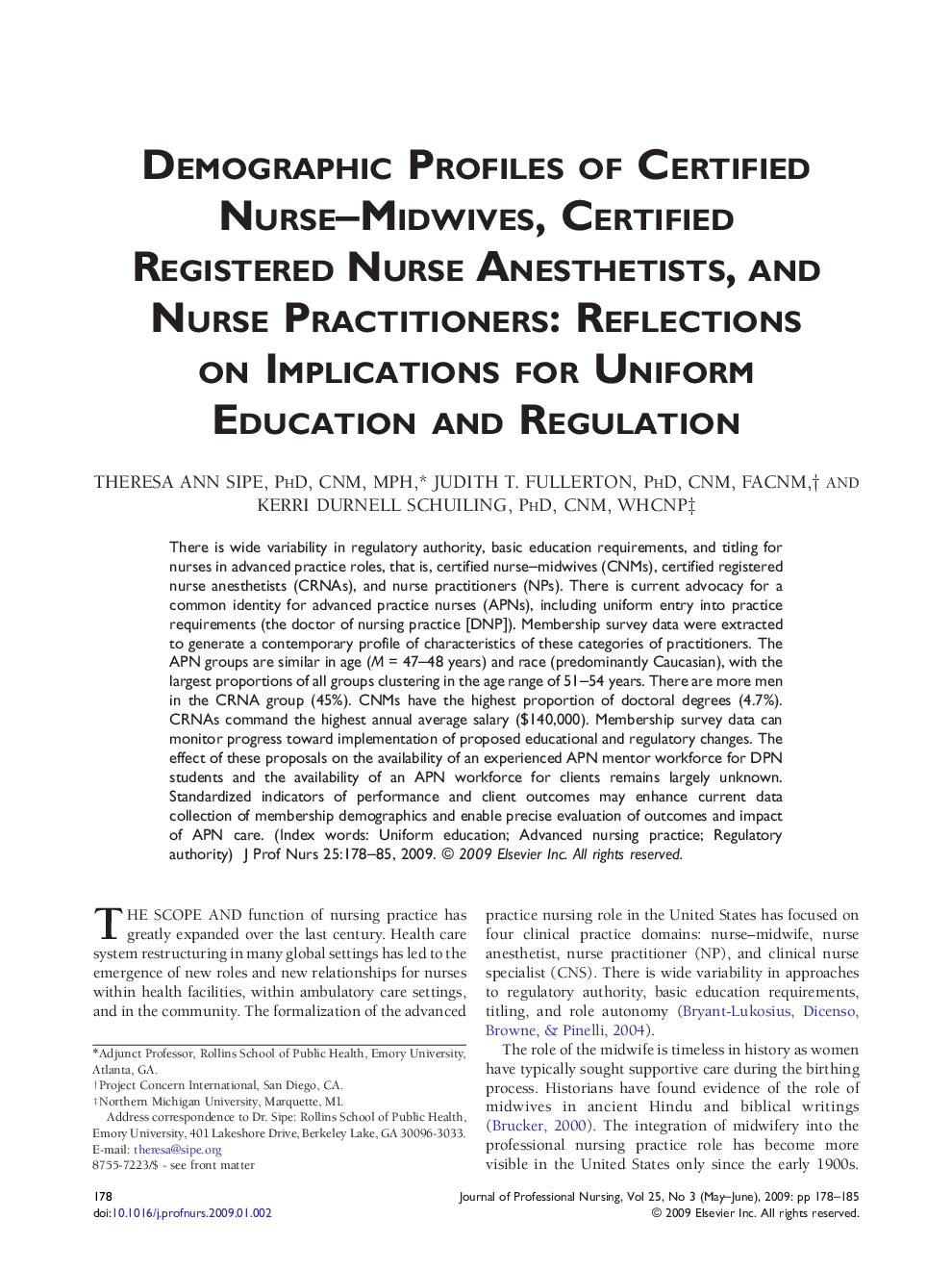| Article ID | Journal | Published Year | Pages | File Type |
|---|---|---|---|---|
| 2668767 | Journal of Professional Nursing | 2009 | 8 Pages |
TopicThere is wide variability in regulatory authority, basic education requirements, and titling for nurses in advanced practice roles, that is, certified nurse–midwives (CNMs), certified registered nurse anesthetists (CRNAs), and nurse practitioners (NPs). There is current advocacy for a common identity for advanced practice nurses (APNs), including uniform entry into practice requirements (the doctor of nursing practice [DNP]).MethodsMembership survey data were extracted to generate a contemporary profile of characteristics of these categories of practitioners.ResultsThe APN groups are similar in age (M = 47–48 years) and race (predominantly Caucasian), with the largest proportions of all groups clustering in the age range of 51–54 years. There are more men in the CRNA group (45%). CNMs have the highest proportion of doctoral degrees (4.7%). CRNAs command the highest annual average salary ($140,000).ConclusionsMembership survey data can monitor progress toward implementation of proposed educational and regulatory changes. The effect of these proposals on the availability of an experienced APN mentor workforce for DPN students and the availability of an APN workforce for clients remains largely unknown. Standardized indicators of performance and client outcomes may enhance current data collection of membership demographics and enable precise evaluation of outcomes and impact of APN care.
